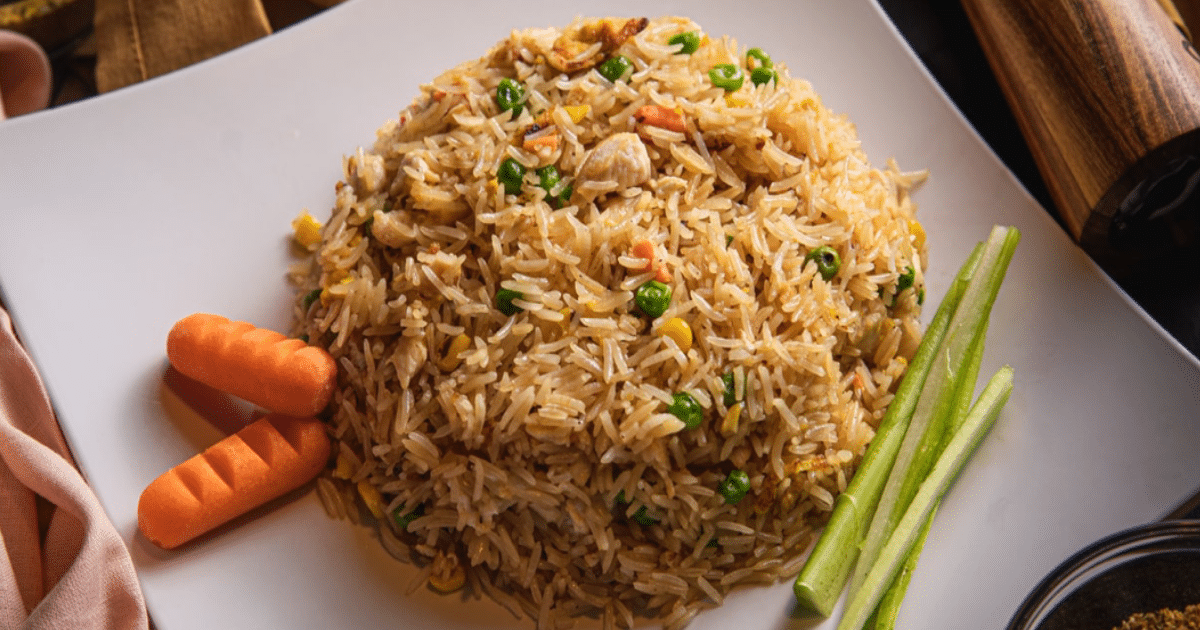Brown rice is superior to white rice, especially if you want to live a healthier lifestyle. This blog will explain how brown rice is more nutritious, does not give empty carbohydrates, and is a whole grain instead of refined grain like white rice. Sadly, science development permitted people to manipulate white rice into making it more addictive and delicious than brown rice. Despite brown rice being healthier, most people stick to white rice because it fills them up faster or is tastier. I will admit that I eat sushi with white rice, but I will eat brown rice instead whenever I have the opportunity.
For the information within this blog, I will use Healthline’s article “Brown vs White Rice – Which Is Better For Your Health.” The article makes the claim that all rice is almost entirely made out of carbs with small amounts of protein and little fat. As I mentioned before, brown rice is a whole grain. Whole grain means that it contains the fibrous bran (the part that contains fiber), the nutritious germ (which is a nutrient-rich core in brown rice), and the carb-rich endosperm (which is the energy-dense quality of brown rice). The healthy parts of the grain provide fiber, vitamins, nutrients, and minerals profitable for the body. On the other hand, white rice is a refined grain in which the bran and germ are removed. The bran and germ are sadly the most nutritious parts of the grain. Therefore, white rice only has the energy-dense quality of rice without the other benefits quickly gained by eating brown rice. Due to this, brown rice is considerably healthier than white rice.
Additionally, brown rice has a significant advantage over white rice with nutritional content because it has more fiber, antioxidants, vitamins, and minerals that I will describe in-depth. Vitamin B1, Thiamine, permits the body to use carbohydrates as energy and plays a crucial role in nerve, muscle, and heart function. Since brown rice has a higher amount of this vitamin, it is one example of a higher nutritional value. Vitamin B3, Niacin, allows the body to turn food into energy and supports the nervous system, digestive system, and skin health. Vitamin B3 is another product more prevalent within brown rice. Vitamin B6, pyridoxine, is needed for protein, fat, and carbohydrate metabolism and is vital for creating red blood cells and neurotransmitters (such as serotonin, dopamine, endorphins, etc.) Again, the larger amount in brown rice displays white rice superiority. There is also manganese that helps with metabolism, cholesterol, protein, and amino acid digestion. Another mineral is magnesium, which is essential for muscle recovery. Phosphorus is found in brown rice in larger quantities and is useful for protein synthesis, ATP production, and cell and tissue maintenance. Iron is essential for the digestive system and immune system’s function. Zinc is vital for wound healing, immune system, and metabolism function. In addition to more fiber, this gives you a comprehensive understanding of brown rice’s health benefits that trump white rice.
I want to mention that both brown and white rice have phytic acid and arsenic, which may negatively impact your body in high amounts. Phytic acid may offer health benefits, but it reduces the body’s ability to absorb iron and zinc from your diet. If you consume rice in large amounts over an extended amount of time, you will develop mineral deficiencies. If you eat a varied diet and do not eat large quantities of rice; you should be okay. The presence of arsenic in rice would be more detrimental for your body. Arsenic is a heavy metal that is naturally present in the environment due to the increased pollution on Earth. Rice can absorb this compound far easier than other food products. Since it is toxic, if you eat rice extensively for the long term, you could develop chronic diseases like cancer, heart disease, and diabetes. HOWEVER, this will only happen if you consume far too much rice, so you should be fine if you consume it appropriately. Brown rice generally has more arsenic than white rice, but white rice does not have as many nutrients.
Finally, I will go over some general benefits of eating brown rice. Brown rice has many nutrients that lower blood sugar levels and reduce the risk of getting diabetes. Unlike brown rice, scientists have found links of increased white rice intake with diabetes. Brown rice reduces the risk of developing heart diseases compared to white rice. Since brown rice has many nutrients and plant compounds, it lowers blood pressure, reduces the amount of fat in the blood, and decreases inflammation, all of which are risk factors for cardiovascular diseases. People have found links to increase good cholesterol levels for people who consume brown rice portraying the cardiovascular benefits from this type of rice. Brown rice has higher antioxidant qualities, which are beneficial for many things in the body. Lastly, eating brown rice instead of white may reduce weight, BMI, and the waist and hips’ circumference, which are all measurements for obesity. The ability to consume delicious rice without the negative consequences of white rice should explain why you should eat brown rice.
I hope this blog made you realize how beneficial brown rice can be compared to white rice. Whether it is increased antioxidants, minerals, vitamins, and plant compounds or reduced ability to gain weight, reduced risk of cardiovascular diseases, and suppressed risk of developing diabetes, please consider the benefits of eating brown rice instead. I greatly recommend eating brown rice instead, and your body will thank you. JUST REMEMBER, DO NOT CONSUME TOO MUCH RICE AS IT CAN HAVE NEGATIVE EFFECTS ON YOUR BODY.





